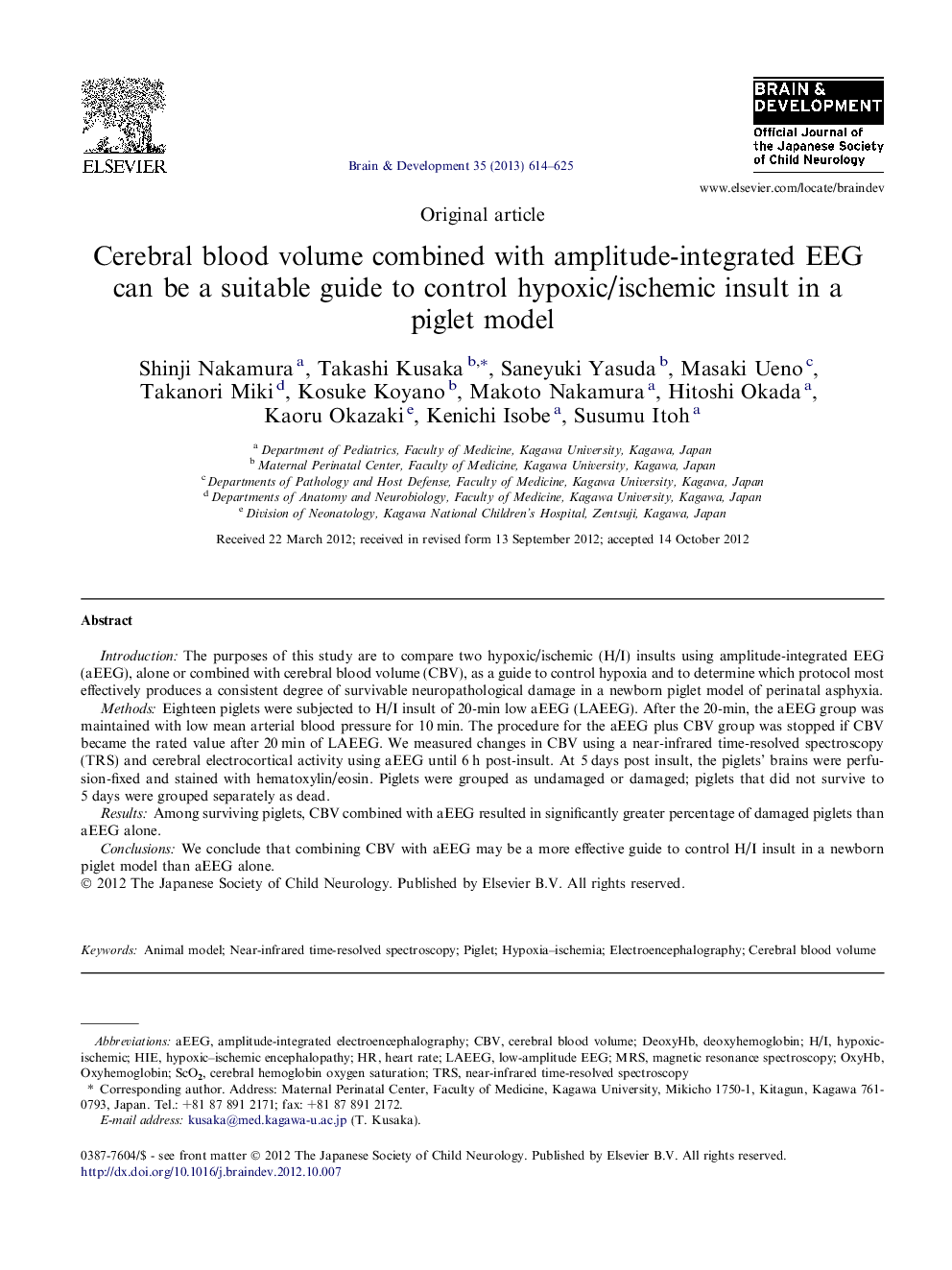| Article ID | Journal | Published Year | Pages | File Type |
|---|---|---|---|---|
| 3037249 | Brain and Development | 2013 | 12 Pages |
IntroductionThe purposes of this study are to compare two hypoxic/ischemic (H/I) insults using amplitude-integrated EEG (aEEG), alone or combined with cerebral blood volume (CBV), as a guide to control hypoxia and to determine which protocol most effectively produces a consistent degree of survivable neuropathological damage in a newborn piglet model of perinatal asphyxia.MethodsEighteen piglets were subjected to H/I insult of 20-min low aEEG (LAEEG). After the 20-min, the aEEG group was maintained with low mean arterial blood pressure for 10 min. The procedure for the aEEG plus CBV group was stopped if CBV became the rated value after 20 min of LAEEG. We measured changes in CBV using a near-infrared time-resolved spectroscopy (TRS) and cerebral electrocortical activity using aEEG until 6 h post-insult. At 5 days post insult, the piglets’ brains were perfusion-fixed and stained with hematoxylin/eosin. Piglets were grouped as undamaged or damaged; piglets that did not survive to 5 days were grouped separately as dead.ResultsAmong surviving piglets, CBV combined with aEEG resulted in significantly greater percentage of damaged piglets than aEEG alone.ConclusionsWe conclude that combining CBV with aEEG may be a more effective guide to control H/I insult in a newborn piglet model than aEEG alone.
